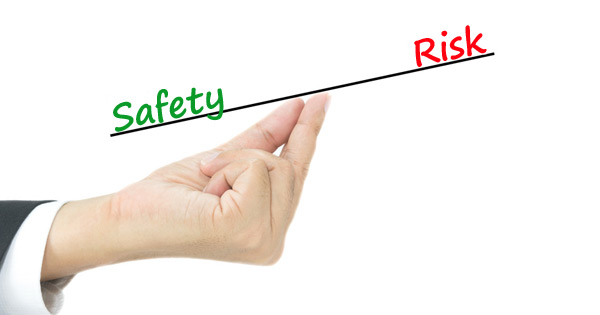By Dr. Alice Delia —

You may be confused why we’re talking about baseball in an indoor environment magazine … well, we’re not!
We’re talking about one of the most poorly understood and misleading concepts in the English language – the idea of “safe.” The Oxford Dictionary has some variations but this one is most relevant here: “Not likely to cause or lead to harm or injury; not involving danger or risk.” This brings up the accompanying concept of “risk” defined by the Oxford Dictionary as “The possibility that something unpleasant or unwelcome will happen.” In other words, risk is a combination of the most likely consequence of a hazard and the probability of it occurring.
Concern about safety in the indoor environment is widespread. Think about it, when choosing a cleaning product do you look at the ingredients list to determine if there’s anything there that would be unsafe? Or when there’s a piece about a major mold problem at a school on the news, do you start to wonder about your local schools? How many times have you asked, “is this safe?”
What does safe really mean to us? Is it that nothing bad will happen or is it that the likelihood of a bad outcome is low, i.e., a small risk.
And that begs the question, what are the risks and how do we gauge how significant those are?
We can look for guidelines, which are basically pre-determined risk assessments. For example, chemical exposure has a lot of guidelines – from workplace values put out by OSHA to health-based limits like the ATSDR Minimal Risk Levels (MRLs), and so many more I could fill an entire page just listing the different kinds! But what do these limits mean in terms of being “safe?” If the concentration of a particular chemical in your environment is below one of these exposure limits or guidelines, does that mean you are “safe,” that you won’t get sick or have some health effect – no. Because now we’re putting all the variables together to come up with something that indicates that the chance or risk of experiencing symptoms or illness is low. For example, if the risk of health problems is 1 in 1 million and you’re that 1 person it doesn’t matter to you that the other 999,999 people weren’t affected! Now, it doesn’t work exactly that way in real life, but you would probably be a lot more comfortable, i.e., feel safer, with a 1 in 1 million risk than a 1 in 10 risk, right?
So, what about things that aren’t so clearly defined or where there’s no guideline to reference?
Take a moment and think about the things in your life that you feel have some risk to them.
Now, add all those together for a “total” risk assessment. Did you include things like falling while getting out of bed or burning your tongue on that extra hot coffee you love so much?
We make decisions about risk all day every day and don’t even realize it. For some things it’s an easy decision because we do it all the time, the risk is minimal, or the possible effect is small. Sometimes it’s more complicated.
Let’s apply this to indoor air quality. I get the question all the time regarding volatile organic compounds (VOCs), “is this a safe level” or “am I safe?” We can measure the concentration and compare it to one of the many limits or guidelines (and good luck figuring out which apply to the specific situation, but that’s for another time). That will give us an idea how much risk of health effects we’re dealing with. But most of these exposure limits or recommendations are for healthy adults. What if we’re applying this to a child or someone with a chronic condition or compromised immune system? And if the concentration is below the limit, does that mean there will be no effects, or could there be some minor symptoms such as respiratory irritation? And what about the concentration that was measured, is that typical or was there something going on at the time of the measurement that might cause the concentration to be higher or lower than normal? How much time does that person spend in that environment? Are there other places where the exposure level might be different?
These more nebulous factors take what initially was fairly straightforward – is the concentration going to cause harm, i.e., is it safe – to a much more complicated answer.
Now, add all the other VOCs, typically several hundred, as well as gases like carbon dioxide, dust, mold spores and allergens, to name just a few of the contributors to indoor air quality. Can we ever really say there is no possibility of harm due to the air quality, that we’re “safe?”
So, “safe” in a practical sense is really the amount of risk a person accepts as normal or tolerable. Something to consider the next time someone asks, “is this safe.”
Read the full article in the February digital edition of Healthy Indoors Magazine at: https://hi.healthyindoors.com/i/1088111-hi-feb-2019/39
The post SAFE! appeared first on Healthy Indoors.






















